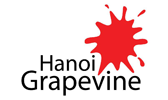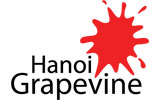Kêu gọi đóng góp cho cuốn sách ảnh: “Đà Nẵng – THÀNH PHỐ XANH”
Kêu gọi đóng góp ảnh chủ để: “Đà Nẵng – THÀNH PHỐ XANH”
Hạn cuối: 15/08/2015
Thông tin từ Viện Goethe:
Cuốn sách ảnh hợp tác cùng Viện Goethe Việt Nam “Đà Nẵng: THÀNH PHỐ XANH” có mục đích chính là giới thiệu sự phát triển gần đây nhất của thành phố trẻ trong một tổng thể thống nhất về không gian và xã hội. Đà Nẵng được lựa chọn bởi đây là thành phố quan trọng nhất ở miền Trung của Việt Nam, đang phát triển rất năng động. Khi xuất bản cuốn sách này, chủ biên muốn nâng cao nhận thức về Đà Nẵng và đồng thời đưa thành phố này đến gần hơn với trung tâm đầu tư của quốc tế và khu vực. Cuốn sách này cũng đồng thời sẽ giới thiệu những khu vực lân cận nhiều di sản văn hóa như Hội An, Huế, vùng núi đã cẩm thạch và khu di tích Mỹ Sơn.
Cơ cấu về nội dung, thiết kế và khổ sách cũng tương tự hai cuốn sách đã hợp tác cùng Viện Goethe Việt Nam xuất bản năm 2014 – “TP. Hồ Chí Minh: MEGA CITY” và năm 2015 – “TP. Hà Nội: CAPITAL CITY”. Các ấn phẩm này đã được rất nhiều doanh nghiệp hỗ trợ và được nhiều cơ quan quan trọng của Việt Nam đánh giá cao. Cuốn sách về Đà Nẵng dự định sẽ được ra mắt công chúng khoảng tháng Giêng/tháng Hai năm 2016.
Để có được nhiều ảnh đa dạng và có chất lượng cao cho dự án hấp dẫn này, chúng tôi trân trọng mời các bạn có ảnh đẹp cùng tham gia. Hạn nộp cuối cùng là 15.08.2015. Dự án này là một dự án phi lợi nhuận. Các khoản tài chính do các nhà tài trợ chuyển chỉ được sử dụng để in sách. Vì vậy, ảnh các bạn gửi sẽ không được trả thù lao. Thay vì thù lao, chúng tôi chỉ có thể dành cho những người gửi ảnh được in trong cuốn sách một cuốn miễn phí.
Đồng thời, chủ biên đang tìm kiếm các doanh nghiệp muốn tài trợ cho cuốn sách này. Các nhà tài trợ sẽ nhận được một số lượng sách miễn phí tương ứng với lô-gô của mình được in trong cuốn sách.
Đặt vấn đề:
Đà Nẵng là một thành phố ven biển và giá trị nghỉ dưỡng của nó được thể hiện rất rõ qua bờ biển dài dọc theo thành phố với rất nhiều khách sạn 4-5 sao. Ngoài ra, ngay rất gần đó là điểm các đến văn hóa quan trọng của Việt Nam như cố đô Huế, bảo tàng sống Hội An, khu mỏ đá cẩm thạch tuyệt đẹp và khu di tích Mỹ Sơn, từng là thủ đô của Vương quốc Chăm. Doanh nhân đánh giá cao sân bay ở rất gần trung tâm thành phố.
Có cảm giác cuộc sống nơi đây nói chung bình lặng hơn so với Hà Nội luôn vội vã hoặc Đại đô thị TP. Hồ Chí Minh. Con người nơi đây cũng thân thiện hơn. Những luồng gió mát trong lành thổi từ biển làm cho môi trường rõ ràng là ít bị ô nhiễm hơn so với các đô thị lớn khác trong cả nước. Đà Nẵng là thành phố đứng đầu Việt Nam về chính sách bảo vệ môi trường. Ở đây có rất nhiều nơi tập kết rác thải sinh hoạt và y tế và gần như toàn bộ nước thải của các khu công nghiệp đã được xử lý. Rất ít khi thấy có ùn tắc giao thông và một hệ thống cơ sở hạ tầng giao thông công cộng thuận tiện với nhiều cây cầu tuyệt đẹp cũng như những đại lộ rộng rãi được cây xanh phủ bóng.
Ở đây, diện tích cây xanh là trên 6m2 bình quân đầu người là rất lớn so với Hà Nội và TP. Hồ Chí Minh. Tuy vậy, biến đổi khí hậu với những hiện tượng thời tiết bất thường hoặc lũ lụt cũng có ảnh hưởng tới chất lượng cuộc sống của cư dân. Điều có thể phê phán ở đây là ít hoạt động văn hóa, chẳng hạn trên lĩnh vực sân khấu. Tương tự như vậy là chất lượng các trường đại học vẫn còn chưa bằng Hà Nội. Mặc dù vậy, từ nhiều năm, Đà Nẵng vẫn được xếp thứ nhất trong danh sách về Chỉ số năng lực cạnh tranh các tỉnh của Việt Nam (PCI). Bloomberg mới đây còn đưa ra một bức tranh rất lạc quan về sự phát triển của Đà Nẵng và so sánh thành phố này như là một Singapore của Việt Nam. Không thể không kể đến các nhà hàng hải sản dọc theo bờ biển, có thể nói là những nhà hàng ngon nhất Đông Nam Á.
Chỉ ra tất cả những nét đẹp đó chính là mục tiêu của cuốn sách “Đà Nẵng: THÀNH PHỐ XANH”. Ngoài ra, cuốn sách còn đóng góp vào việc giúp cho cư dân đồng nhất với thành phố của mình và tham gia vào việc phát triển thành phố một cách bền vững.
Hiện tại cuốn sách dự tính bao gồm các chương sau:
– Đà Nẵng nhìn từ trên cao
– Đà Nẵng phát triển theo thời gian (chúng tôi cũng tìm những ảnh cũ trong khoảng thời gian từ 1990 đến 2000 để in trong mục này)
– Kiến trúc và Nhà ở
– Con người Đà Nẵng
– Văn hóa và hoạt động giải trí (Bao gồm ảnh của Hội An, Khu núi đá cẩm thạch, Huế và Mỹ Sơn)
– Linh hồn của Đà Nẵng
Chủ biên:
Michael Waibel là một chuyên gia về Địa lý đang làm việc tại trường Đại học Hamburg (CHLB Đức). Năm 2001, ông đã xuất bản luận văn tiến sĩ của mình về đề tài phát triển đô thị ở Hà Nội. Từ giữa những năm 1990, ông thường xuyên đi lại giữa Việt Nam và Đức để làm những đề tài về nghiên cứu khoa học hoặc giảng dạy. Vì vậy ông có cơ hội ghi chép lại thường xuyên những thay đổi trong quá trình phát triển đô thị ở Việt Nam.
Nếu các bạn quan tâm đến đề tài này, hãy liên hệ với TS. Michael Waibel để có thêm thông tin theo địa chỉ email: [email protected]















